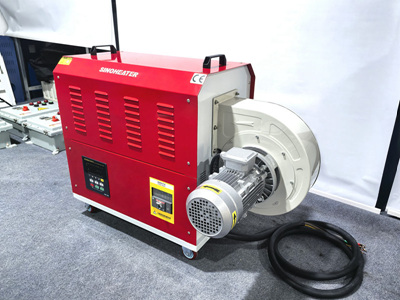Essential Precautions for Using Hot Air Blowers in Pipe Thawing Applications
Thawing frozen pipes using hot air blowers is a common method in residential, commercial, and industrial settings. However, improper use can lead to pipe damage, safety hazards, or inefficient thawing. Below are detailed guidelines to ensure safe and effective pipe defrosting while adhering to operational best practices.
Temperature and Airflow Control
Avoiding Overheating Risks
Excessive heat can warp plastic pipes (e.g., PVC, PEX) or cause metal pipes (e.g., copper, steel) to expand rapidly, leading to cracks or joint failures. Maintain air temperatures between 60–80°C for plastic pipes and 80–100°C for metal pipes. Use an infrared thermometer to monitor surface temperatures continuously. For example, when thawing a 1-inch PVC water line, limit exposure to 40–60 seconds per section to prevent melting.
Adjusting Airflow Speed
High-velocity airflow can concentrate heat on small areas, creating hot spots. Set the blower to a medium speed (2–3 m/s) to distribute heat evenly. For long horizontal pipes, move the blower slowly (5–10 cm per second) along the length. Vertical pipes require a top-down approach to prevent trapped air from blocking heat penetration.
Gradual Thawing Techniques
Start heating 30–50 cm away from the frozen section and work toward the blockage. For instance, when thawing a frozen drainpipe, begin at the access point and move the blower in 15-cm increments. This prevents sudden pressure changes that could dislodge ice plugs violently, causing water hammer or pipe bursts.
Safety Measures for Personnel and Property
Protective Gear Requirements
Operators must wear heat-resistant gloves, safety goggles, and non-slip footwear to protect against hot air, flying debris, or wet surfaces. For overhead pipe thawing, use a harness system to prevent falls. When working in confined spaces (e.g., basements, crawl spaces), ensure proper ventilation and carry a portable gas detector to monitor for carbon monoxide buildup from fuel-powered blowers.
Electrical and Fire Safety
Keep the blower’s power cord away from water and heat sources. Use a ground-fault circuit interrupter (GFCI) to prevent electric shocks. For gas-powered models, store fuel in approved containers at least 5 meters from the work area. Have a Class B (flammable liquids) fire extinguisher nearby and avoid smoking or open flames during operation.
Structural Integrity Checks
Inspect pipes for pre-existing cracks or corrosion before thawing. Weakened sections may rupture under thermal stress. For example, when thawing an old cast-iron sewer line, tap the pipe lightly with a rubber mallet to check for hollow sounds, which indicate internal damage. If cracks are detected, shut off the water supply and consult a plumber before proceeding.
Post-Thawing Maintenance and Prevention
Slow Reintroduction of Flow
After thawing, open faucets gradually to allow water to flow at a low pressure (0.5–1 bar). Sudden high-pressure flow can dislodge remaining ice fragments or stress weakened pipe joints. For multi-story buildings, thaw pipes from the lowest floor upward to prevent airlocks in the system.
Insulation and Heat Tracing
To prevent future freezing, insulate pipes with foam sleeves or fiberglass wraps. For critical pipes (e.g., main water lines), install electric heat tracing cables that activate automatically at low temperatures. Ensure insulation covers at least 90% of the pipe’s surface area and seal gaps with waterproof tape.
Monitoring for Recurrence
Check thawed pipes daily for 3–5 days to detect delayed cracks or leaks. For buried pipes, inspect access points (e.g., cleanouts, valves) for moisture or soil displacement. In cold climates, maintain indoor temperatures above 10°C and open cabinet doors under sinks to allow warm air circulation.
By following these precautions, property owners and maintenance teams can thaw pipes safely and reduce the risk of recurring freeze-related damage. Proper temperature control, safety protocols, and post-thawing maintenance are critical to preserving pipe integrity and preventing costly repairs.



